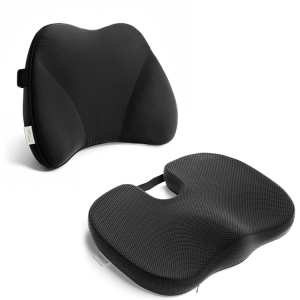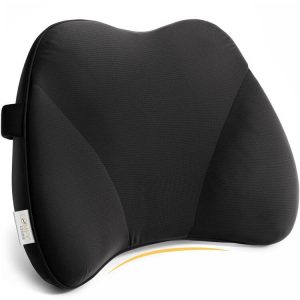
Push-up is a full-body workout that doesn't require any special equipment or a costly gym subscription. Furthermore, the motion may be adjusted or advanced, making it suitable for persons of various fitness levels.
However, if you perform your push-ups incorrectly, they may change from being your favorite activity to a painful workout. Form is important in every strength-training activity, and you'll want to avoid making some of the most common push-up errors.
Why Do I Get Back Pain After Push-ups?
Because of all the tiny bones, ligaments, tendons, and muscles in the lower back, it is a delicate region of the body. There, even the tiniest error or incorrect maneuver might result in harm. Push-ups are a bodyweight exercise that, if done improperly, can cause lower back discomfort.
1. Progressing too quickly to the ground
The most common mistake people make when doing push-ups is immediately falling to the floor.
This part is the most difficult variant of the push-up that demands the most strength and stability of basically the entire body. Compensation happens when strength or technique isn't exactly perfect, and people end up inflicting more harm than good on their joints.
Many people start their push-ups on an elevated surface, such as a bench. This is the most effective method to ensure long-term prosperity. The raised hand posture relieves tension and weight from your upper body and core, enabling you to gradually build strength and concentrate on the appropriate setup and technique.
How to fix: Start your hands from an elevated surface if you're new to push-ups or want to enhance your technique. The easier your push-up will be, the higher the surface. Reduce the height of your surface as your technique and strength increase, bringing it closer and closer to the floor.
2. Bad Form
Push-ups typically target the upper-body muscles of the chest, triceps, and shoulders. You might get lower back discomfort from push-ups if you do them incorrectly. This is most noticeable in the hips.
The last thing you want to do when lowering yourself is let your hips drop. This puts undue strain on the spine, which can aggravate lower back discomfort.
How to fix: When you see someone doing push-ups, they don't appear to be very difficult, but there's more to them than meets the eye. The alignment of your spine is the most important thing to consider.
You should have a straight line from your shoulders to your heels once you're in the beginning posture. In yoga, this is called a plank posture.
You must contract your abs and quadriceps firmly to achieve this position. Maintain this straight postural posture as you lower yourself to the floor by using your abs and quads.
When your chest is just above the floor, come to a complete stop and push yourself back up in a smooth manner. To keep your spine stable, keep your abs firm.
3. Sagging Your Hips
The second most common push-up mistake is allowing the hips to sink or drop into extension. This is often a result when the person is unaware that they are in the position or lacks the hip and core strength to maintain appropriate posture.
The issue with this position is that it places an undue amount of tension on the lower back. You compress and hang on your spine and ligaments (passive restraints) for stability instead of engaging your abs and glutes (active restraints) to keep your spine and pelvis in a neutral position. This can lead to issues such as disc herniations and bulges in the future.
Posts You May Enjoy Reading:
- Best Pillows For Large Shoulders
- Upper Back Pain After Deadlifts
- Causes & Prevention for Upper & Middle Back Pain
How to fix: Reduce the amount of weight your core must hold by bringing your hands to an elevated platform, such as a bench. Roll your hips underneath you while doing a push-up, keeping your glutes clenched and abdominals braced. Do not let go of this at any point throughout your push-up.
4. Raising Your Hands Too High
Most individuals place their hands too high above shoulder height when doing a push-up. This is frequently due to a lack of strength to maintain proper posture during the exercise.
When we raise our hands too high, the tension is shifted away from the areas we want it to be, such as our arms and chest, and instead travels to the front of our shoulders, upper traps, and neck, which can lead to injury down the road.
It also pushes you to lower into the push-up with your elbows too wide, putting an unnecessary amount of stress on your elbows and wrists.
How to fix: Start by resting your chest on the floor or an elevated place when you set up. Your hands should be just outside shoulder width, and your thumbs should be just beneath your armpits. You're ready to go now that you've pushed yourself out of that beginning posture.
5. Keeping Your Eyes Up for Too Long
The neck is another typical sore spot after push-ups. If you try to stare up in a mirror for too long or overstrain your upper trapezius, you may feel a pinch in your neck (the muscle around your neck).
How to fix: Keep your neck long and stretched, in line with your torso, while performing the exercise. To put it another way, keep your attention fixed on the ground under your feet (not at your hands or too far in front of you).
6. Excessively Leaning Forward
The wrists are small, delicate joints that can become tight or achy for a variety of reasons, particularly while doing push-ups. If you haven't had an injury before, you may have wrist discomfort when doing push-ups. In certain situations, you may be leaning too far forward with your torso, causing your wrist to stretch.
How to fix: You might begin by simply taking lengthier break intervals between sets to minimize overuse and tiredness in the wrists. Taking a day or two off between push-up exercises is also an option. You may also strengthen your wrists and forearms by doing workouts like holding a plank or a tabletop posture (on all fours).
Also, when you move vertically up and down, keep your chest in line with your body. This might help you avoid putting too much strain on your wrists by moving too far forward on the way up.
7. Overarching Your Lower Back
If you have pain or stiffness in your lower back after doing push-ups, it's possible you're not managing your core and hips appropriately. "You may start to feel [pain] in your lower back if you do push-ups and the front of your hips hit the ground first before anything else and you look to have an excessive arch in your lower back," according to Sam Becourtney, a physical therapist at Bespoke Treatments in New York City.
How to fix: Consider maintaining your ribs placed over your pelvis with a posterior pelvic tilt to fix this mistake. This involves keeping your core tight, glutes squeezing, and tailbone tucked. Maintain this position for the duration of the activity. Stop completing reps if you're getting too tired, and attempt a reduced version instead.
Safety & Precautions
If you have a shoulder, wrist, or elbow injury, you should avoid doing push-ups. Consult your doctor or physical therapist to determine whether this is an acceptable workout for your situation.
To maintain your wrists in a neutral posture, place your hands on dumbbells or push-up bars. Stop doing push-ups if you have shoulder pain or hear a clicking noise in your shoulder.
FAQs
Which muscles are engaged when doing push-ups?
The push-up, when done correctly, is a complex exercise that works the chest, shoulders, triceps, back, stomach, and even the legs.
How many calories do push-ups burn?
According to the Centers for Disease Control and Prevention (CDC) and the American College of Sports Medicine, one minute of push-ups can burn about seven calories (ACSM).
How many push-ups should I do each day?
The amount of push-ups you should perform each day depends on your current fitness level as well as other parameters including age, gender, and weight. Push-ups should be done in three sets, according to fitness experts. To find out how many reps you should perform, use the formula below.
Takeaway
Performing push-ups everyday will develop your muscles, improve your posture, strengthen your core and upper body, burn calories, and much more.
Determine whether you are in pain or discomfort. When doing any activity, you should never experience discomfort. If you continue to have pain, you should stop doing the workout and seek medical advice.
Also, think about the form you're using when you're doing the exercise. When completing workouts, some people may arch their lower back excessively, which can create lower back pain.
Warming up can also help prevent post-workout discomfort or upper back pain just like it can with any other exercise. Sun salutes, as practiced in yoga, are a good option for pushups. Add shoulder rolls, arm circles, torso and wrist rotations to the mix.







